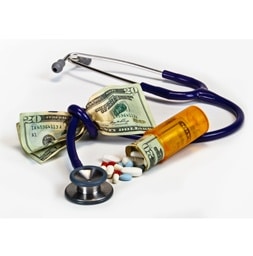 Life insurance and auto insurance are very different. People are used to buying both a car and the insurance for that car on the same day in order to drive out of the lot. With life insurance, put your seatbelt on. It’s a different transaction altogether.
Life insurance and auto insurance are very different. People are used to buying both a car and the insurance for that car on the same day in order to drive out of the lot. With life insurance, put your seatbelt on. It’s a different transaction altogether.
It can be hard for some people to understand that life insurance is a selfless investment that is dependent on one’s own mortality. It can be even more difficult for some to realize that their lifestyle choices can directly affect their policy’s premium and terms. But when you decide that life insurance is an important consideration, and superstition or procrastination fade, you are left to face genetics and indulgences.
You can’t hide your medical history
A medical exam is a requirement when purchasing any sizable life insurance policy, with very infrequent exceptions to the rule. Medical records are usually secured from your doctor as well. But even if you don’t have a doctor or can’t remember when you last saw your doctor, blood work and other information acquired from the medical exam can provide amazing insight to your health. In other words, it’s hard to not disclose health issues or concerns, and they likely will be detected one way or another.
Insurance companies hire underwriters, usually with medical backgrounds, to be able to ascertain how certain ailments affect short and long-term health. Insurance companies also hire actuaries to calculate statistics on who dies when and why. This means that insurance companies are fully aware that your involvement in hazardous activities, which could include skydiving, rock climbing, or motorcycling racing, may compromise your life expectancy. These activities can therefore influence the potential health status for which you could qualify.
Avoid a sub-standard rating
The carriers have various tiers associated with different health conditions, and the premium varies between these tiers. Carriers place clients in tiers that range from ultra-preferred and preferred to standard plus and standard, followed by various levels of sub-standard. This is known as being rated.
The healthier you are, the longer you are likely to live and the less expensive your policy is going to be. If you have certain diagnoses or take certain medications, however, the carriers will start penalizing you. For example, if you were a 45-year-old female in preferred health, your premium could potentially be $1,100 annually. However, if the underwriters found any inconsistencies in blood work or medical records, they may only approve you at the standard tier. In that case, your premium could jump anywhere from $1,700 to $1,800. And if you smoke? Your premium may double.
Take inventory of your life and see where you could make improvement to your health and wellness. On top of everything else, it really will save you money!
READ MORE:
Insurance Quotes: Insurance Brokers vs. Online Quotes
Auto, Property Insurance: Buying First Insurance Plans
Health Insurance for the Self-Employed






